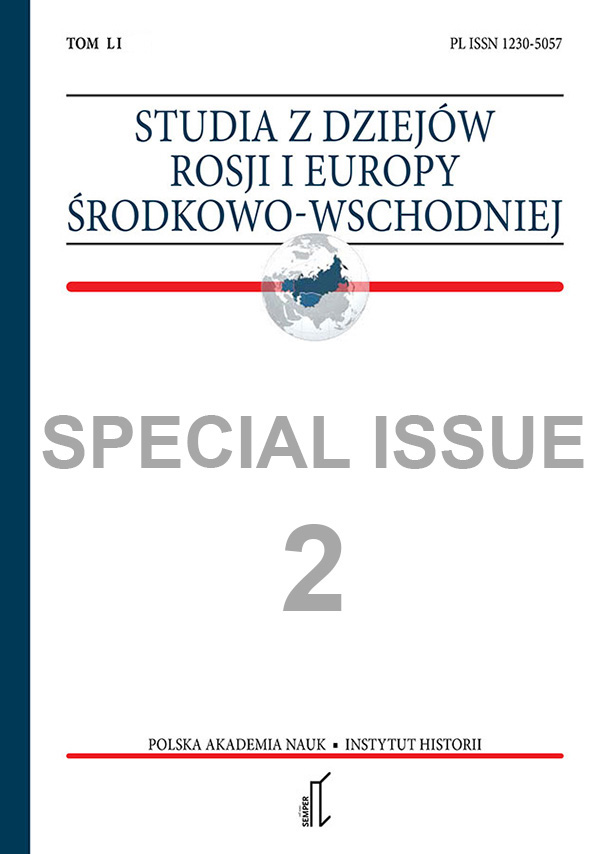The Polish Society for the Preservation of Monuments of Culture and Art in Kraków before World War I – attempts at transpartition activities
The Polish Society for the Preservation of Monuments of Culture and Art in Kraków before World War I – attempts at transpartition activities
Author(s): Adrianna SznapikSubject(s): Cultural history, Oral history, Political history, Social history, 19th Century, Pre-WW I & WW I (1900 -1919)
Published by: Instytut Historii im. Tadeusza Manteuffla Polskiej Akademii Nauk
Keywords: Kraków Polish Society for the Preservation of Monuments of Culture and Art; Galicia; Jerzy Mycielski; protection of monuments; culture and social society; partitions of Poland
Summary/Abstract: In 1902 in Kraków the Polish Society for the Preservation of Monuments of Culture and Art was established with the purpose of protection of all Polish monuments in all the Polish lands under three partitions. The group of founders was dominated by professors of the Jagiellonian University and the Academy of Fine Arts, members of the Polish aristocracy and students from the families of landowners. The Society’s president was Jerzy Mycielski, an art historian and professor of the JU. The main difference distinguishing the Society from others was its activity within the territories of three partitions set forth in the statute. For this reason, an important place within the Society’s structure was occupied by its non-local members who were to recruit new members and collect membership fees, but also to make inventories of Polish historical monuments and take measures for their preservation. Their activities are reflected in a collection of their correspondence preserved in the National Archives in Kraków. Most members were from Galicia, from the Kingdom of Poland and from annexed territories. The letters reveal their zeal and dedication to their tasks; and it should be emphasised here that usually they were amateurs, lovers of history or archaeology, such as the family of Chrzanowski from the Lublin Gubernia, or Father Górzyński from the Kalisz Gubernia, Michał Rawicz Witanowski from Kłodawa, or Wandalin Szukiewicz from Vilnius. The Society, despite organisational problems, had several important successes, such as saving the castle at Trakai, restoration of St Michael’s Church in Vilnius, or salvation from demolition of the Krzysztofory Palace in Kraków. Despite the fact that three-partition operations specified in the statute were carried out only partially, the activities of the Society could be regarded as successful, for it was the first institution protecting Polish historical monuments on the Polish lands under the three partitioning powers. The article is to remind of this pioneering activity in the context of transpartitional cooperation in the name of protection and preservation of Polish cultural heritage.
Journal: Studia z Dziejów Rosji i Europy Środkowo-Wschodniej
- Issue Year: 51/2016
- Issue No: 2
- Page Range: 5-29
- Page Count: 25
- Language: English

